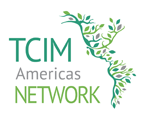Traditional medicines, conception and development in the Americas
The WHO Strategy on Traditional Medicine 2014-2023 defines traditional medicine as “the sum total of knowledge, skills, and practices based on the theories, beliefs, and experiences of different cultures, whether explicable or not, used to maintain health and prevent, diagnose, improve, or treat physical or mental illnesses.”
Its definition in the different countries of the Americas has varied over time according to internal social, political, economic, and cultural conditions, as well as advances in the formulation of public health policies with an intercultural approach.
Therefore, definitions from the last century considered traditional medicine to be a set of preventive, diagnostic, therapeutic, and evaluative practices (Ecuador, Peru, and the Dominican Republic); a set of medical practices based on rituals, mysticism, and magic or magical-religious practices (Costa Rica and Mexico); a “mestizo” medical practice from the Andean region with a strong religious influence (Bolivian Society of Traditional Medicine, SOBOMETRA); alternative medical practices for healing human diseases and ailments (Chile); nosological concepts, some with indigenous roots and others of Spanish and/or Black African origin, which include a series of therapies formerly used by the people to solve health problems (Nicaragua); or as the application and wisdom of a nation’s native populations, based on their own worldview, to solve the most common health problems (Guatemala) (1).
The definitions established in this century, most of which are reflected in the policies and regulatory frameworks of different countries, understand traditional medicine as a system comprising knowledge, traditions, practices, beliefs, and its own agents and methods of diagnosis and treatment (Guatemala) (2); as the knowledge, practices, rituals, concepts, and processes of integral health that indigenous peoples have ancestrally carried out as a model of collective life, framed within the cosmovision of each people (Agreement 326 of 2005 of the CNSSS, Colombia) (3); as a set of health care systems originating in the Mesoamerican and Arid American cultural regions, which have their roots in the indigenous cosmovision (intimate conception-interpretation of the world) and in the profound knowledge about health and disease that the different indigenous peoples of our country have accumulated, organized, and updated throughout their history (National Policy on Traditional Indigenous Mexican Medicine) (4); as the sum of all knowledge, aptitudes, and practices based on the theories, beliefs, and autochthonous experiences of different cultures, whether or not they have an explanation, which they use to maintain health and prevent, diagnose, or treat physical and mental illnesses (Law on Ancestral Traditional Medicine, Nicaragua) (5); as the set of concepts, knowledge, wisdom, and ancestral practices based on the use of material and spiritual resources for the prevention and cure of diseases, respecting the harmonious relationship between individuals, families, and the community with nature and the cosmos, as part of the National Health System (Bolivian Law on Traditional Ancestral Medicine) (6); as the collection of diverse health practices, approaches, knowledge, and beliefs that incorporate medicines based on plants, animals, and/or minerals, spiritual therapies, manual techniques, and exercises applied individually or in combination to maintain well-being, as well as to prevent, diagnose, and treat diseases (Peru) (7).
Meanwhile, in the communities that have practiced traditional medicine for thousands of years, it is recognized as a health system composed of a complex set of knowledge, expertise, traditions, practices, and beliefs, structured through their own health agents (known as traditional doctors, ancestral doctors or healers, traditional medicine specialists, traditional medicine practitioners, shamans, healers, bone setters, or sobanderos, depending on the different conceptions of the countries and specialties they practice), who have their own methods of diagnosis, treatment, care, and prevention, and whose therapeutic resources include, among others, medicinal plants, animals, minerals, rituals, diets, and songs.
This concept covers a diversity of traditions, medical practices, and concepts of health and illness among indigenous, Afro-descendant, Romani, and other ethnic groups in the region, which over time and through cultural encounters have syncretized or not syncretized various elements of other medicines, but which remain anchored to their ancestral history and cosmovision.
References
- Research project “Traditional Health Systems in Latin America and the Caribbean: Basic Information” is part of the Pan American Health Organization (PAHO) Initiative on Indigenous Peoples’ Health in the Americas. November 1999. Washington, D.C. Pan American Health Organization. Available at: https://iris.paho.org/handle/10665.2/48336
- Ministry of Public Health and Social Assistance, Guatemala. National Program of Traditional and Alternative Medicine. p. 13
- Article Seven. Adaptation of the Mandatory Health Plan of the Subsidized Regime for Indigenous Peoples of Agreement 326 of 2005 of the National Council for Social Security in Health. Through which certain guidelines are adopted for the organization and operation of the Subsidized Regime for indigenous peoples. Ministry of Social Protection, Colombia. https://www.minsalud.gov.co/Normatividad_Nuevo/ACUERDO%20326%20DE%202005.pdf
- National Policy on Traditional Indigenous Mexican Medicine. Ministry of Health. General Directorate of Health Planning and Development. Directorate of Traditional Medicine and Intercultural Development. First Edition 2007, Updated 2022. Available at: https://www.gob.mx/cms/uploads/attachment/file/765987/Pol_tica_Nacional_de_Medicina_Tradicional_Ind_gena_Mexicana_-SUB.pdf
- Law on Ancestral Traditional Medicine. Law No. 759, Approved on March 29, 2011 Published in La Gaceta No. 123 on July 4, 2011. Nicaragua. https://www.minsa.gob.ni/sites/default/files/2022-10/LEY%20759%20DE%20MEDICINA%20TRADICIONAL%20ANCESTRAL.pdf
- Bolivian Ancestral Traditional Medicine Law. Law No. 459, of December 19, 2013, Plurinational Legislative Assembly, https://bolivia.vlex.com/vid/ley-459-553811138
- Dionisio Astuhuamán Doris Irene; Portocarrero Gutiérrez Julio; Salaverry García Oswaldo. Intercultural dialogue in health: technical document. [Internet] 2014. Ministry of Health, National Institute of Health, 41 p. Available at: https://www.gob.pe/institucion/minsa/informes-publicaciones/320918-dialogo-intercultural-en-salud-documento-tecnico


